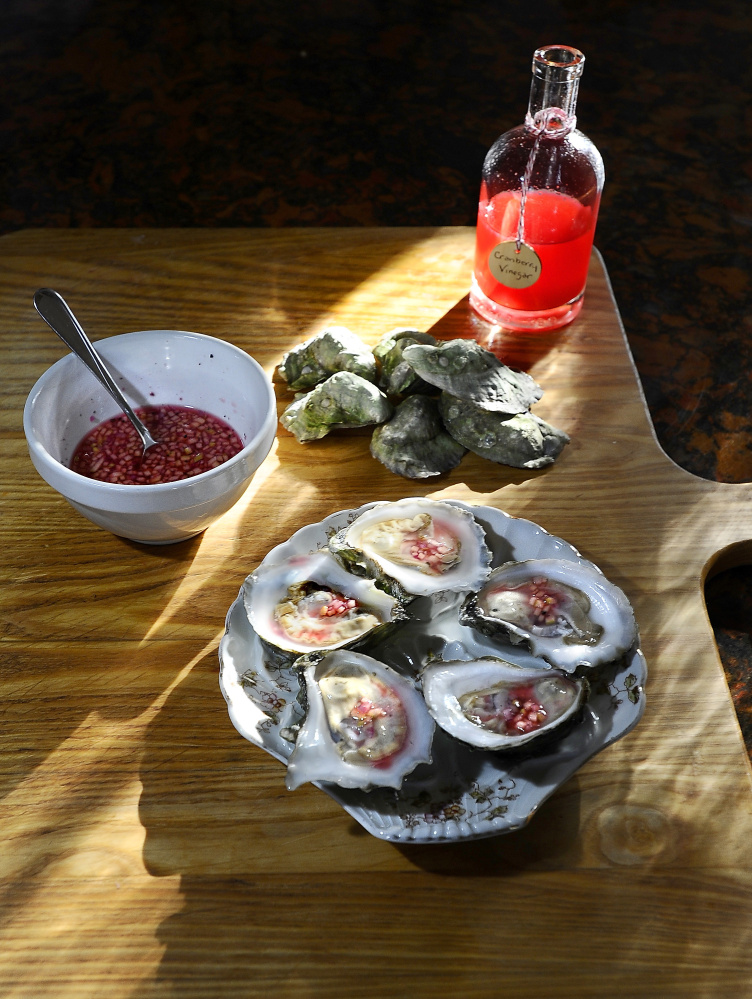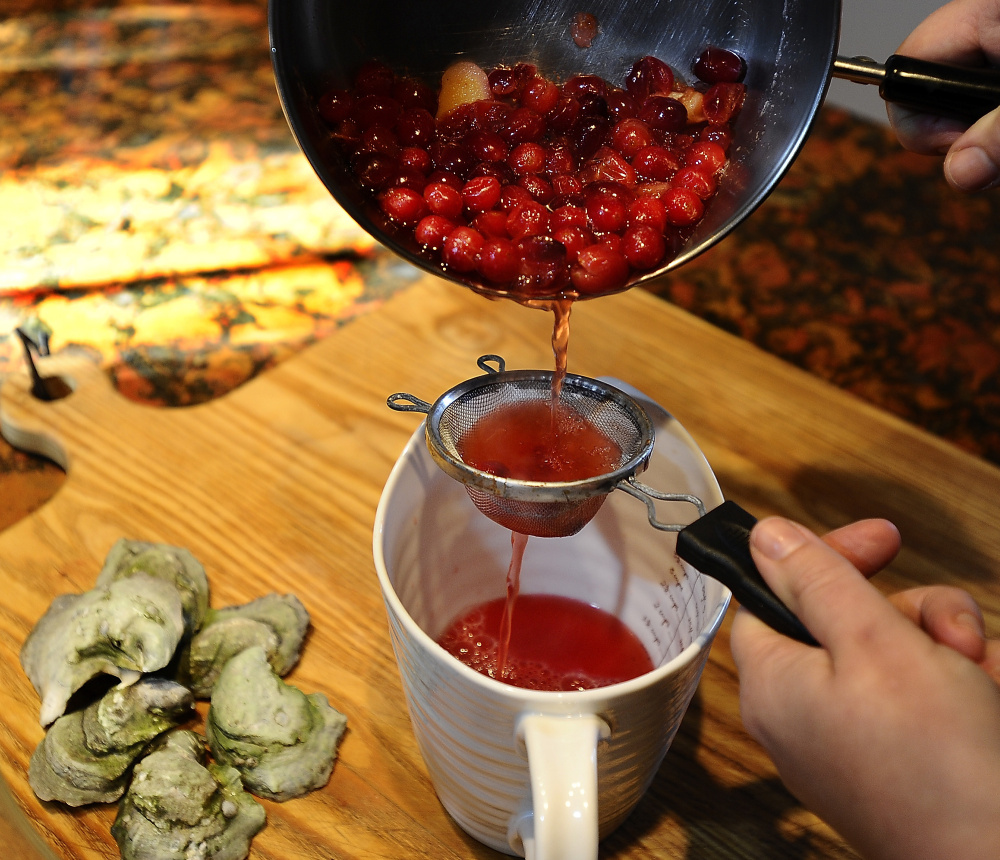Oysters are a delight anytime of year, but right about now, because they’ve packed on the glycogen stores they’ll need as energy to survive sitting in frigid Gulf of Maine waters all winter, they are particularly plump and sweet.
I’d never eaten so many mollusks as I have since moving to Maine three and a half years ago. It’s not just me. Friends who visit from all the other places I’ve lived: Western Massachusetts, Connecticut, New Jersey, Pennsylvania, England and, yes, France, want Maine oysters, too. After shucking literally hundreds of Bagaduce, Flying Points, Glidden Points, John’s River, North Havens, Taunton Bays and Pemaquids, I had to ask myself, just how many Maine oysters is too many to pull from the sea to be ecologically sound?
That’s a tough question, said Dana Morse, a scientist with Maine Sea Grant and University of Maine Cooperative Extension. The vast majority of oysters that make their way onto dinner plates in Maine are farmed, as over 80 percent of the world’s wild oyster beds have been eaten or destroyed by pollution and/or warming waters. According to the Maine Department of Marine Resources, the agency that grants permits for all aquaculture sites, Maine has 60 oyster farms, with another 13 permits pending.
“It’s possible to overload an area with aquaculture, but … we are a ways away from that,” Morse said. The state’s entire marine aquaculture industry, which also includes three seaweed, a dozen mussel and 26 finfish farms, occupies just 1,370 acres, roughly equal to 1,000 football fields.
In recent years, Morse says “wild” oysters have been showing up on the shorelines again – most probably products of successful spawns from the farmed oysters. In that case, the farms have helped rebuild wild oyster beds with what Morse called “naturalized” or feral oysters.
Oysters play into marine life sustainability because they provide an ecosystem service, explained Saint Joseph’s College oceanography professor Mark Green. As filter feeders, they eat phytoplankton and remove nitrogen and phosphorous from the ecosystem, thereby improving the quality of water for the fish that swim in it. Green, also owner of Basket Island Oyster Company in Casco Bay, harvested 100,000 mollusks this year and hopes to increase that number to 300,000 next year.
Nonesuch Oyster Company owner Abigail Carroll says volume is a huge factor in deeming an oyster farm economically sustainable. She has seen her annual harvests fluctuate for a number of reasons, but hopes to reach her 500,000 oyster goal in a couple more years.
Trial and error has taught Carroll that her oysters are happiest when they are removed from the floating bags in which they spend their adolescence and tossed into the water to spend about a year sitting on the farm’s silty, salty bottom, where they pick up a shimmery green glow and develop lovely fanned shells (which are, coincidentally, easier to shuck). The distance between the bags and the bottom is only a matter of feet. But the difference in how the oysters look and taste is very noticeable, Carroll said.
“It’s a reminder of how small changes in a marine ecosystem can have a huge effect on marine life and therefore a reminder that we’ve got to be thoughtful of how we interact with our little piece of the planet,” said Carroll.
CRANBERRY, GINGER AND APPLE MIGNONETTE
Oyster farmer Abigail Carroll and I conceptualized this recipe via a Facebook messaging conversation after I interviewed her about oysters. She mentioned that she’d love to create a recipe for the holidays that paired oysters and cranberries. I consulted classic French cookbooks and reference guides that help pair flavors, and we settled on cranberry and ginger-infused vinegar and apples as a festive topper for oysters on the half shell.
Makes about 1/2 cup mignonette (with 11/2 cups of infused vinegar to spare)
2 cups white balsamic vinegar
1 cup fresh or frozen cranberries, roughly chopped
1-inch piece fresh ginger, sliced into 1/4-inch medallions
2 tablespoons minced apple
2 tablespoons minced shallot
Freshly ground black pepper
Combine the vinegar, cranberries and ginger slices in a small pan. Place the mixture over medium heat until it begins to simmer. Simmer for 5 minutes.
Remove from heat, let cool to room temperature and strain.
Reserve berries and ginger for your next batch of cranberry sauce. Pour infused vinegar into a jar with a lid. Vinegar can be stored at room temperature for 2 months.
In a small bowl, combine 1/2 cup cranberry-ginger vinegar with the apples, shallots and black pepper to taste.
Serve with raw oysters on the half-shell.
Christine Burns Rudalevige is a food writer, recipe developer and tester, and cooking teacher in Brunswick. She writes about feeding her family Maine seafood at familyfish.net. Contact her at cburns1227@gmail.com.
Send questions/comments to the editors.




Success. Please wait for the page to reload. If the page does not reload within 5 seconds, please refresh the page.
Enter your email and password to access comments.
Hi, to comment on stories you must . This profile is in addition to your subscription and website login.
Already have a commenting profile? .
Invalid username/password.
Please check your email to confirm and complete your registration.
Only subscribers are eligible to post comments. Please subscribe or login first for digital access. Here’s why.
Use the form below to reset your password. When you've submitted your account email, we will send an email with a reset code.